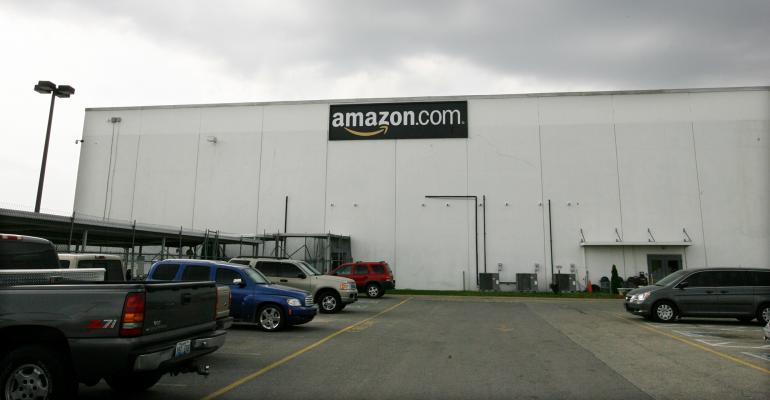Net leased commercial properties, particularly within the single-tenant retail and healthcare sectors, have seen increased interest and high demand over the past year.
Triple-net leased assets especially have long been attractive to investors and lenders alike. Proven resilience through the pandemic is further drawing capital due to their stability and strength.
Based on almost 40 years of working with investors and lenders operating in the triple-net lease space, we evaluate the benefits, explore current trends and discuss how a healthy capital markets outlook can help facilitate continued growth.
Stability and quantifiable risks drive appeal
A triple-net leased property is fully occupied for a known, usually long-term duration—with the tenant responsible for all operating expenses, utilities, property taxes, maintenance and repairs. This minimizes management responsibilities while providing a more quantifiable risk to the investor.
Major draws are the ability to analyze the tenant’s likelihood of meeting the lease obligation over the lease term; the actual terms of the lease and the thoroughness of the lease document clearly detailing the specific obligations of landlord and tenant; and minimized common risk and uncertainty, compared to other segments of the investment universe.
For example, say there are two identical industrial buildings next to each other: one covered by a 10-year lease with the U.S. Postal Service guaranteed by the federal government and the other a 10-year lease guaranteed by a regional manufacturing company.
There will always be risk-adverse investors drawn to the certainty of the performance of the U.S. Postal Service lease who would price that building higher, creating a more conservative return on the investment.
Further, because triple-net lease terms are typically longer, they eliminate vacancy exposure and minimize the cost of re-tenanting the property. Additionally, these leases usually include provisions for rental increases during the lease term.
These investments range from small and highly visible retail locations such as fast-food restaurants, bank branches and gas stations to large, 1-million-plus-sq.-ft. Amazon logistics facilities.
Investors in this product type range from large financial institutions, such as life insurance companies, REITs and pension funds who own thousands of locations totaling billions of dollars of properties, to the smaller investors who seek a passive, low management type of investment.
Sector’s resilience driving investor and lender appetite
The triple-net lease space was one of the sectors least affected by the pandemic, providing stability during times of uncertainty.
The market for this type of investments is pure, transparent and not unlike the stock market—with the value of these properties specifically based on the credit worthiness of the tenant and the term of the lease. Investment in triple-net leased properties over the years has evolved into a very detailed, systematic and distinct industry. Thousands of these properties are trading daily and pricing is consistent throughout the market.
Investors and lenders alike are attracted to the longer-term leases with creditworthy tenants. In fact, there is an entire group of lenders and capital providers that specialize in providing debt and mortgages for triple-net lease properties.
They, like the investors, categorize the risk of the investment based on the term of the lease, as well as the creditworthiness of the tenant. A more specialized segment of these lenders lend only on properties whose leases are with investment grade tenants. These tenants must have an S&P rating of BBB- or better (top 5 of 12 ratings). Mortgages on properties with investment-grade tenants typically carry a more favorable interest rate.
As the effects from the COVID-19 pandemic wane, lenders have a better understanding of the various product segments they are most comfortable lending in and have developed new guidelines and underwriting standards on how to invest in these segments moving forward.
Attractive financing available as capital market outlook remains healthy
Now is an excellent time for those looking to makes moves within the triple-net lease space to secure competitive financing terms. All types of capital providers continue to have ambitious allocations and optimistic expectations for the performance of these mortgages.
With the effects of the pandemic now identified for the most part, we anticipate consistent activity in commercial lending that is similar to the last three to four years.
Origination volume in the second quarter of 2021 was 1 percent above the same quarter pre-pandemic in 2019. In the first half of 2021, we saw an equal amount of sales activity together with maturing loans needing to be restructured. We expect this volume to continue throughout 2021 and into 2022 and 2023.
As a result of the Federal Reserve’s commitment to keeping employment rates up and the economy healthy, we see interest rates remaining relatively low. We see the Federal Reserve continue to discuss when and how much they should allow rates to increase.
For instance, the Mortgage Bankers Association is projecting the 10-Year T-bill, the index most commonly used to price mortgages on commercial property, to average approximately 1.5 percent for the balance of 2021 and average just slightly below 2.0 percent for 2022. These 10-Year T-bill rates would put “all in” rates on mortgages in the 3.0 percent to 4.0 percent range, which is still a very competitive and attractive environment.
Almost without exception, the mortgages that we have provided in the last couple of years have been at rates lower than what was paid off.
Due to the sector’s proven resilience and reliability through the pandemic-induced downturn, we expect to see continued investor and lender interest in triple-net leased properties.
Based on the current lending environment and a healthy capital markets outlook, now is an ideal time for investors who are attracted to these stable returns to seek competitive financing terms.
Patrick Ward is the founder and president of MetroGroup Realty Finance, a private mortgage banking company based in Newport Beach, Calif. You can reach him at [email protected].





